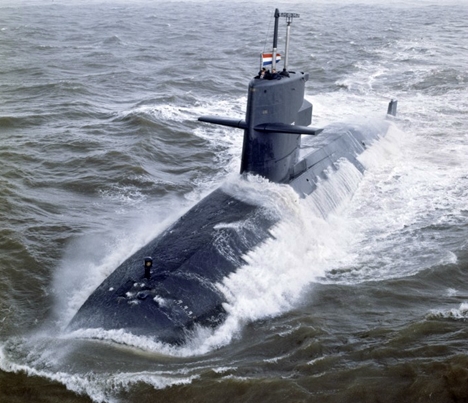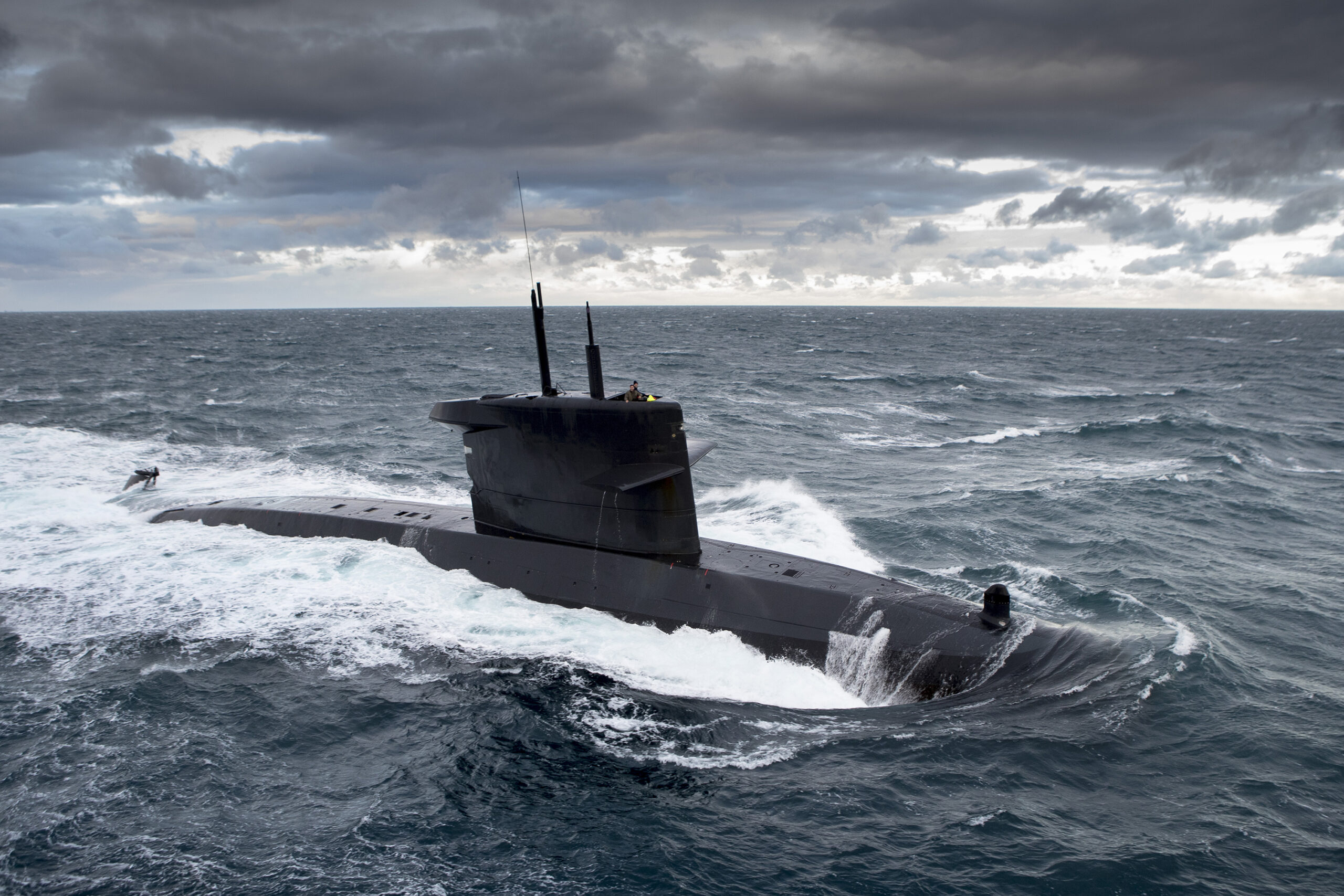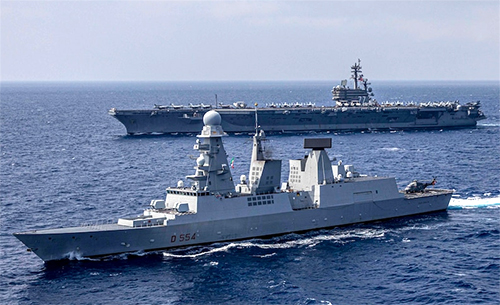Russia simulated launch Kalibr missiles from North Sea
The Russian Navy held the Ocean Shield exercise in August. About 30 Russian warships trained in the Baltic Sea and the North Sea. The exercises had a predominantly offensive character, which is remarkable. During this exercise, Russian naval ships simulated an attack on land with Kalibr cruise missiles, the Russian variant of the Tomahawk. This has probably never happened in the North Sea before.
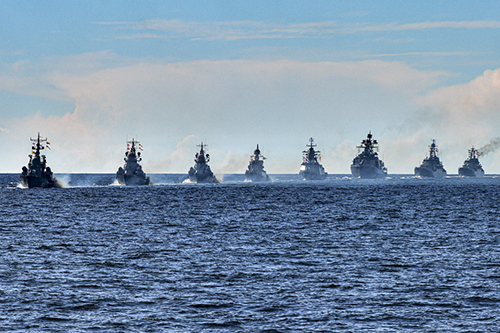
Cruise missiles in the North Sea
On the 6th of August three corvettes of the Steregushchy class, RFS Steregushchy, Boikiy and Stoikiy, corvette RFS Serpukhov (Buyan class) and the new corvettes RFS Mytishchi and RFS Sovetsk of the Karakurt class, set course for the North Sea, where they started their exercises on the 8th of August.
According to a report from the Russian Navy, the ships simulated the simultaneous launch of Kalibr and Uran cruise missiles on land and sea targets. Kalibr missiles are cruise missiles designed to hit land and naval targets. Uran missiles are anti-ship cruise missiles. Despite the fact that both weapons move at a subsonic speed, the range of the weapons is gigantic. Both weapons are known to be capable of covering distances of at least 1500 kilometers.
Although the Russian Navy has not announced exactly where that exercise took place, the location can be determined roughly, based on a satellite photo. The photo was taken by the commercial Sentinel-2 L2A satellite on the 8th of August in the morning, around the time the Russian Navy posted the article. At that time the ships sailed 132 km west of Esjberg, Denmark and 239 km north of Frisian Island Schiermonnikoog, The Netherlands, in a south-westerly direction.
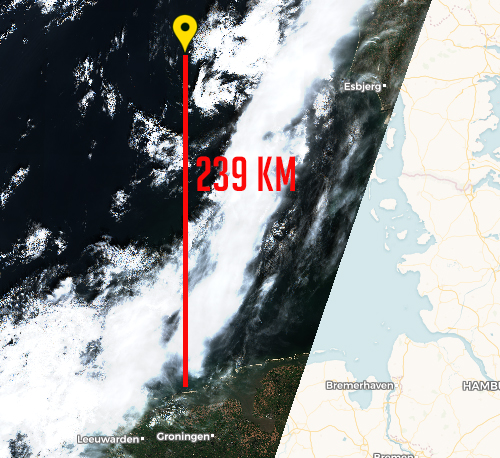

First time
It is probably the first time that Russia did a simulated cruise missile launch in the North Sea. It is remarkable that Russia chooses this location for practicing with long-range weapons. From this position, NATO countries such as Denmark, Norway, the Netherlands, Germany, Belgium and Great Britain are well within the reach of the cruise missiles.
Exercises related to electronic warfare were also held, such as jamming radars or GPS of a simulated enemy.
It is of course allowed to hold exercises in international waters, but the decision to practice with such weapons near NATO-countries Denmark and The Netherlands, is as unique as it is striking. According to former naval officer of the Belgian navy Frederik van Lokeren, who has been engaged in tracking the Russian Navy since 2019, this is the very first time that cruise missiles have been simulated to hit land targets from the North Sea. This is also the first time as far as Naviesworldwide.com is aware. The Kalibr is a new weapon and was first used in 2015.

NATO followed the Russian ships
Since the exercises took place in the North Sea, the Russian ships were shadowed and escorted by NATO warships during the exercises. These were Royal Navy ships HMS Mersey, HMS Tyne and the Type 23 frigate HMS Westminster, and ships from the standing NATO Maritime Group 1 (SNMG1) NRP Corte-Real (Portugal) and HMCS Toronto (Canada).
It is not known whether Dutch ships participated in the shadowing of the Russian ships. In any case, no Dutch naval vessel is mentioned in public sources. The Royal Netherlands Navy did not say if it had a ship at sea near the Russian Task Force, but said it “was aware of the exercise”.
The Russian fleet was also monitored by a P-8a Poseidon of the British Air Force. This is a Boeing 737-based maritime patrol aircraft, equipped with torpedoes, radar and submarine detection equipment. On the 12th and 13th of August the Rusian ships returned to their ports, marking the end of this part of the exercise.
Starting in the Baltic Sea
Before the Russian ships headed for the North Sea, Ocean Shield 2020 began on the 3th of August with a amphibious landing on the coast of Kaliningrad, a Russian exclave at the Baltic Sea between Lithuania and Poland. Using 25 BTR-82A vehicles, a small battalion landed on the beach. The BTR-82A is an armored amphibious vehicle, intended for landing small groups. Satellite images show that the Russian ships were very close to each other here, making it quite possible that exercises between the ships were also carried out. There were three ships of the Ropucha class present here: RFS Minsk, RFS Kaliningrad and RFS Korolev. In addition, hovercraft RFS Evgeny Kocheshkov (Zubr class) was present and RFS Rimsky-Korsakov (Dyugong class) was also located off the coast of Kaliningrad.
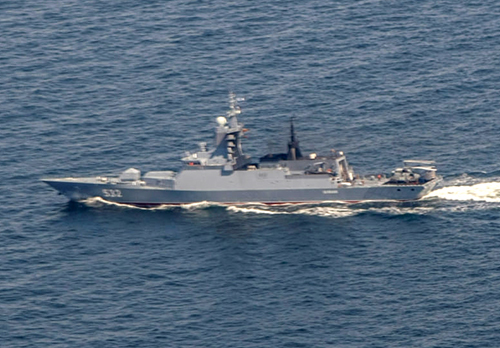
An assertive Russia
Despite the fact that 30 ships took part in the exercise, a lot less than last year, Ocean Shield 2020 was an interesting exercise due to its offensive nature. Frederik van Lokeren also reports this in his blog, where he describes the exercise in more detail.
Van Lokeren: “2019 was mainly a defensive exercise in which Russia tried to send a convoy to Kaliningrad that was under siege while they wanted to regain maritime dominance. Now it was completely different. Kaliningrad was the forward base used for the first amphibious assault. After which the counterattack is blocked by the training enemy [in the Baltic Sea], followed by a sortie on the North Sea, so more offensive. ”
In addition, the lack of available information was remarkable, according to Van Lokeren. This year’s exercise received much less attention from Russian media than last year. The information mainly originated from Open Source Intelligence. Very little information is available, particularly on the period from the 9th to the 12th of August, the period on the North Sea. Where Russia seemed to want to show its defensive strength in 2019, in order to convince the world that a possible attack on Russia would be unwise, this was now a more mysterious exercise. On the other hand, the Russian Navy did report the training launches and the electronic warfare exercise at the site.
What does this mean for the European NATO countries? The exercise does not mean that Russia has plans of attack, but it is in line with an increasingly assertive Russian defense force that is more often active in the North Sea.

